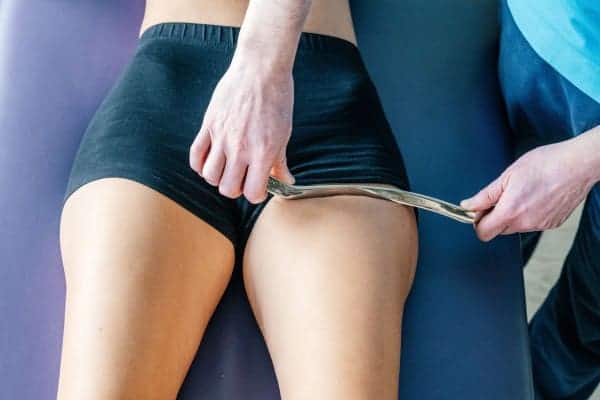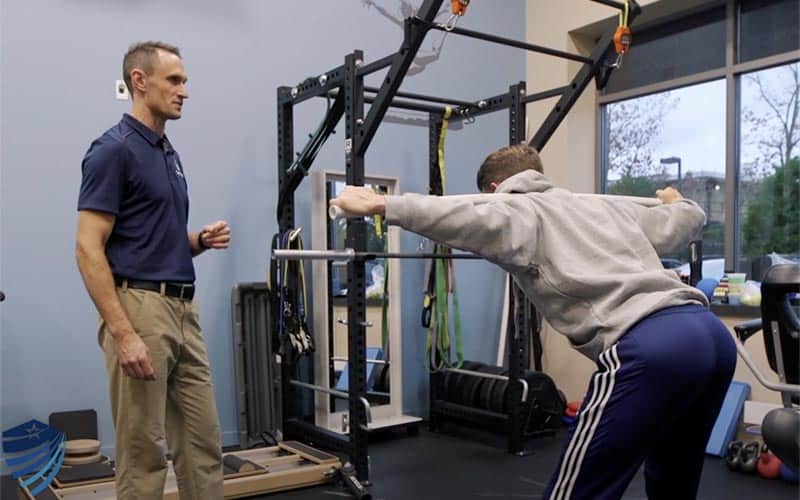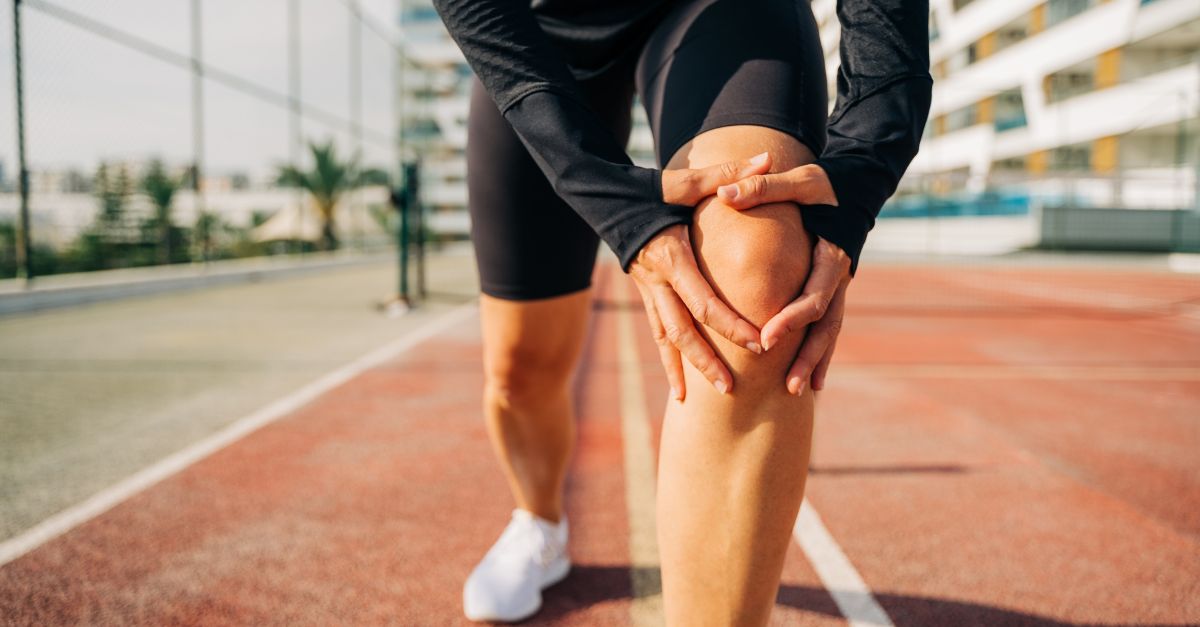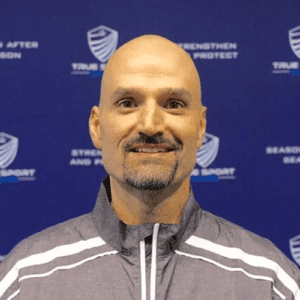This month we are going to unravel the mystery of these so-called “Overuse” injuries that are so prevalent in today’s athletic vernacular. We will go through scenarios that PROVE the typical approach is WRONG! Hold onto your seats, but not too tightly. You don’t want to overuse your grip and develop tennis elbow!! HEHEHE.
Conversation #1 with your Doc. (I’m not going to simply call out MDs here. This applies to DCs, PTs, Trainers, or any other person in Health Care or Fitness who hasn’t been asking the right questions)
Professional – What seems to be the trouble?
Injured Person (IP) – I have left knee pain. (For simplicity reasons I chose the knee but you can fill in any part of the body and this still works)
Professional – I see. What provokes the complaint?
IP – Running. I’m training for a 5K.
Professional – Stop running. It’s an overuse.
IP – OK.
That’s usually where the conversation ends. You may get the plan to rest for a couple of weeks. Maybe get a script for some anti-inflammatory meds, and a “pay the copay on the way out” conclusion to your appointment. We are SO afraid to question our practitioners.
I ENCOURAGE patients to be inquisitive. See if something makes sense to your brain. If not, ASK! I even felt this way when we first started practicing. Hope and I would talk about our patients that day and if she had an interesting case where she shared her tactics, I would always ask why she did what she did. Not to second guess, but to understand her rationale and see how her brain was operating. Every plan we give is an experiment. It usually proves itself within a week of complying with the exercise prescription. If it does not, we change the plan until something sticks. Here is how the conversation SHOULD have gone with an inquisitive patient.
Professional – What seems to be the trouble?
IP – I have left knee pain
Professional – I see. What provokes the complaint?
IP – Running. I’m training for a 5K.
Professional – Stop running, it’s an overuse.
IP – What is an overuse?
Professional – It’s when an area has too much stress from an activity and begins to hurt.
IP – Why was my knee overused?
Professional – Because you were training for a 5K.
IP – Why isn’t my other knee overused? I was running with both legs.
Professional – Go away. And don’t forget to pay your copay.
IP – I’m going to True Sport Care and Chiropractic!
Now you realize that ALL overuse injuries should come to True Sport Care and Chiropractic to get untangled. I legit believe this to be true. We routinely rack our brains figuring out different combinations of exercises so that you can fix your issue.
Now on to the nitty-gritty. Do you honestly believe that only one leg can be overused when training for a 5K? So why is it complaining? This next statement is the WHOPPER that you cannot, should not, ever ever forget. In fact, I’m going to change the font, underline, and if it were possible, sound an air horn when you read the line.
OVERUSE CANNOT EXIST WITHOUT AN ASSOCIATED UNDERUSED MUSCLE
Why is this important?
The problem with the REST approach to treating overuse injuries
Let’s take the REST approach and see how it plays out. Let’s also say it is diagnosed as a runner’s knee. Runner’s knee is typically a patellar tendonosis. “-Osis” is a suffix that means a process, condition, or state, usually abnormal or diseased. Therefore this is an abnormal patellar tendon.
- Resting will no doubt make the PAIN better as you remove the stressful activity from the situation.
- After your 2 week rest cycle, you return to running.
- If you didn’t change anything else about the situation, the same stress will likely create the same -osis.
- The “pattern” of how you propel yourself forward (running) is the same, therefore the stress returns.
As you can see, the REST approach to treating an overuse knee injury provided only temporary relief.
A better way to treat overuse injuries
In our world, we would investigate the muscles of the leg. We usually have the usual muscle suspects based on our experience that would be higher probabilities but many times I go into an analysis thinking that some muscles will be weak and I’m proven wrong. So we would test the quad, glute, soleus, gastroc, rec fem, ham, glute stabilizers, rotators, etc., to name a few. If the quad tests strong, then YES indeed it IS an overused muscle but simply attacking this muscle will prove fruitless in the long term. There HAS to be a related weak or dependent muscle which induced this EXTRA stress on the quad. We keep hunting for weakness until something reveals itself. When we find the weakness we know we can prescribe the “reprogramming” exercises to the patient.
Passive vs. Active therapies for treating overuse injuries
Think of passive therapies as things that are done to you by someone else (generally). Active therapies are things you do to yourself, specifically something that you have to be mindful about. Here is another whopper of a statement so get ready…
PASSIVE THERAPIES WILL NEVER OFFER A PERMANENT SOLUTION TO YOUR OVERUSE COMPLAINT
Do you even need passive therapies to treat overuse injuries?

The passive therapies that I’m talking about include but are not limited to:
- Chiropractic adjustments,
- passive stretching,
- trigger point injections,
- massage therapy,
- foam rolling,
- stick rolling,
- active release technique,
- gua sha,
- graston technique,
- thera-gunning,
- any topical creams,
- dry needling, etc.
They may all offer some instant relief, but you probably already know that the relief is temporary. None of these techniques truly changed the underlying reasons as to why the overuse began in the first place. That’s why at our sports medicine and chiropractic office we ALWAYS add some type of exercise prescription to our plan. Passive therapies are great to offer initial pain relief and make you feel more comfortable but they are not sufficient on their own.
The exercise prescription rounds out the treatment and makes you less dependent on our services. If you only receive these passive services at a facility and don’t add an active (brain) component to the mix, your results will not last and your injury will keep haunting you.
Active Therapies – the secret to lasting results when treating overuse injuries

Active therapies make you change the patterns in your brain so that a different combination of muscle effort can be used – this rebalances the equation. Here is the winning approach focused on active therapies that we use at True Sport Care and Chiropractic to effectively treat overuse injuries.
- Muscle testing to identify dependent/independent muscles
When we do our muscle testing, the weakness we test for may not, and should not be called weakness by itself. It’s really more of a dependent/independent status that we are checking.
Ex. If we test your glutes and you cannot effectively contract your glutes without also contracting your quad, we consider your glutes to be dependent on your quads. Now the quad not only has to do the work of the quad, but they ALSO have to help out your glutes. Who gets mad in this scenario? The quads of course. They are mad because they have to put out extra effort. The glutes, on the other hand, are literally sitting around lazily watching the quads sweat it out. - Help the overused muscles release
This is the moment to incorporate our passive therapies to help our quads release. Let’s massage those quads. Let’s adjust them. Let’s trigger point them or thera-gun them. AH. Quads feel much better.
The next day with walking, running, lifting, moving or just being human, the quads have the same workload so after each effort, they return to getting overworked. You should see at this point how we can TRULY fix the issue. Rather than simply making the quads more comfortable, what if we have a meeting with the glutes and tell them THEY need to start producing! This is a team effort and everyone needs to pitch in. THIS IS WHAT WE DO. - Train the underused muscles to correct the faulty movement patterns
This is the most important part. We find the underused muscles (glutes in the scenario that we are discussing right now) and train you how to train them. It happens quickly. When the prescription is followed, you will see great changes in the first week. Organic strength, meaning hypertrophy of muscles, doesn’t occur that quickly. Neurological reprogramming does.
Why do muscles get UNDERUSED?
I hope you have now become that inquisitive patient and are asking the next most logical question.
How did that muscle become UNDERUSED?
Brilliant question!
Here are two main scenarios that we see in our office.
- Trauma (acute injury)
If you can identify a specific injury or “trauma” that happened in your training then we can easily find the cause of your underused muscles. For example, you got hit in the quad with a lax ball. The quad effort decreases while the injured muscle heals. The rest of the muscles in the chain or pattern will have to contribute more. We just don’t want that dependency pattern to wind up being your default pattern going forward. - Chronic injuries
For most of you who visit our office, there is no trauma to speak of. Many injuries are of the chronic type with no official mechanism of injury (MOI). We love these because it requires the full extent of our investigative abilities. Many times through interrogation and a robust history, we can figure out why some of these chronic issues are happening. Unfortunately, we aren’t privy to many things that go on in someone’s life. When this type of patient comes into the office I’ll always answer their question of “why did this happen”, with “I’d need to follow you around for a month with a video camera to weigh in, and that might get a little weird.” You can learn more about daily habits and hope they can contribute to chronic pain here. The patient only spends 30-60 minutes in our office each week. That leaves about 10,000 minutes each week that they spend outside our office where most of these dysfunctional patterns form.
Address your DEFAULT Patterns to Avoid Compensation Patterns and Overuse Injuries
We must first speak about the DEFAULT PATTERNS to correct any compensation patterns in movement (that lead to injury).
- The body always defaults to COMFORT, STRENGTH AND EASE.
- It avoids discomfort, weakness, and difficulty.
Each muscle has a certain inherent effort potential. This changes with injury or repatterning. When the muscle reaches its threshold, the body will then send in recruitment muscles to aid in the cause. You can test yourself on this subject. Try the following exercise:
- Try to do a simple set of bicep curls with light weight. You may or may not feel the effort coming from your bicep area.
- Slowly but continuously try to raise the weight.
- You’ll see a lot of changes happening to your recruitment patterns as the weight increases.
- You may arch your back more.
- You may notice that you’re gripping harder.
- You may even feel your neck muscles tensing more.
Yes, this recruitment allows you to lift more weight but when these strategies are employed with every rep or every set, then they start to become your default which can lead to overuse/underuse injuries and pain.
I always say that if you have to lift a piano off of your dog, then I truly don’t care which patterns you choose. We have many powerlifter patients and in their sport specifically the only goal is to lift MORE weight. Therefore they are expressly designed to lift with compensations but this is not a typical use case for the average person.
For my weight training, I typically do a symmetry assessment for my first set and address any asymmetry if one exists. Then I’ll perform medium-weight reps trying to avoid compensation patterns. Finally, I WILL squeeze out some reps where I know the cheats were employed. But only a select few and certainly not the majority.
Many of you would say that form is the most important thing with working out and I say bupkis! We have seen perfect form create dysfunction and I’ve seen mediocre form fix dysfunction. It’s all about the “feels”, people. You MUST feel the exercise correctly rather than appear to be doing it correctly. When we demonstrate activations in the office and the patient says “Am I doing it right?” I always say, “I have no idea. You have to FEEL it correctly to benefit.”
I feel like I can go on and on about the subject but I don’t want to break the internet. It has taken us 20 years to truly understand and, dare I say, master these concepts. We ultimately get frustrated when patients come in, have failed a litany of other treatments and we fix them in 2-3 visits with some insight, guidance and coaching. We feel it’s pretty simple but maybe that’s just because we practice the concepts every day.
In summary,
STRENGTHEN THE ASSOCIATED UNDERUSED MUSCLE TO MOST EFFECTIVELY TREAT THE OVERUSE SYNDROME
Hope your eyeballs didn’t get overused.
Need help diagnosing and treating your injuries? Make an appointment at True Sport Care and Chiropractic in Smithtown today! (Not in the Long Island area? Request a virtual evaluation session.)



